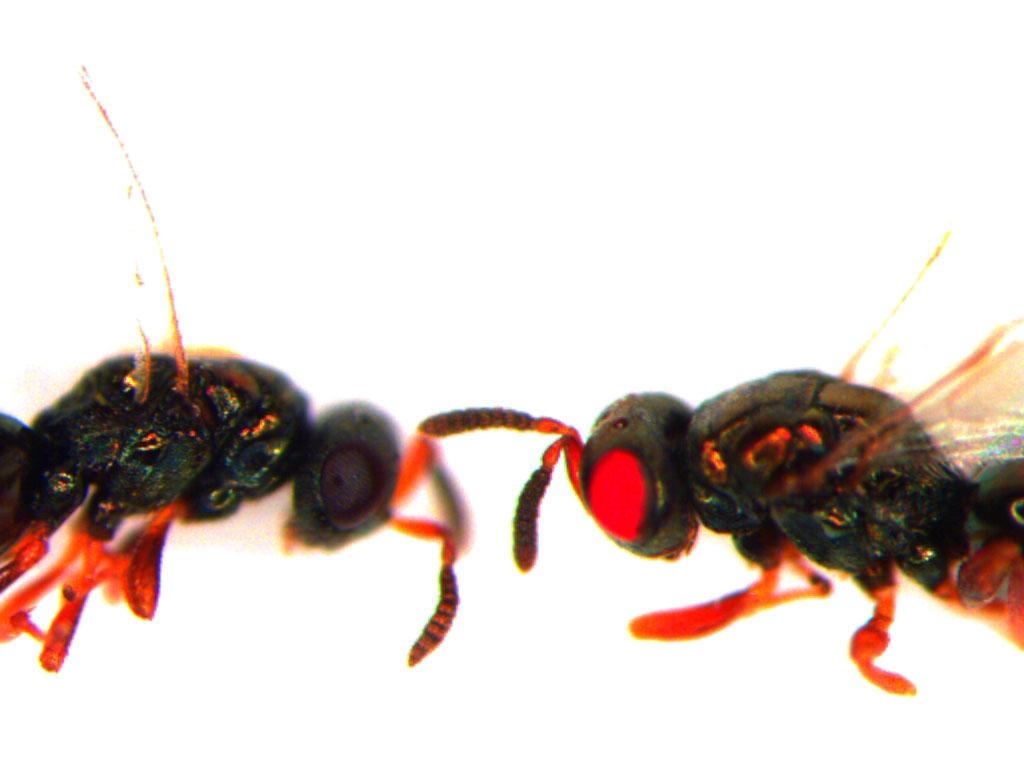The Independent's journalism is supported by our readers. When you purchase through links on our site, we may earn commission.
Red-eyed mutant wasps created in lab for first time
'Big beautiful red eyes are something you won’t miss'

Your support helps us to tell the story
From reproductive rights to climate change to Big Tech, The Independent is on the ground when the story is developing. Whether it's investigating the financials of Elon Musk's pro-Trump PAC or producing our latest documentary, 'The A Word', which shines a light on the American women fighting for reproductive rights, we know how important it is to parse out the facts from the messaging.
At such a critical moment in US history, we need reporters on the ground. Your donation allows us to keep sending journalists to speak to both sides of the story.
The Independent is trusted by Americans across the entire political spectrum. And unlike many other quality news outlets, we choose not to lock Americans out of our reporting and analysis with paywalls. We believe quality journalism should be available to everyone, paid for by those who can afford it.
Your support makes all the difference.A jewel wasp has been genetically modified to have red eyes to prove that ‘gene editing’ technology can be used on such small creatures.
The ultimate goal is to gain greater understanding of insect genetics, which could be used to find new ways of protecting crops or stopping the spread of diseases like malaria.
The researchers, led by Professor Omar Akbari, of University of California Riverside, said initially they planned to look into the male jewel wasps’ unusual ability to ensure all its offspring are male.
Professor Akbari said it was currently unknown how they “can somehow kill the female embryos and create only males”.
“To understand that, we need to pursue their paternal sex ratio (PSR) chromosomes, perhaps by mutating regions of the PSR chromosome to determine which genes are essential for its functionality,” he said.
The study, described in the journal Scientific Reports, was technically difficult because the wasps’ eggs are only about a quarter the size of a grain of rice and are contained within a larger egg sac.
“You’re essentially pulling a small egg out of a larger egg, injecting it with components to mutate the DNA and then putting it back into the bigger egg to develop,” Professor Akbari said.
“You have to use a very, very fine needle and a microscope and individually inject hundreds to thousands of embryos, but in the end, we developed a protocol that can be used to cut the DNA in this organism and we showed that it works.
“You need a really steady hand and it requires a lot of patience in micro manipulation that one can learn over time.”
The colour of their eyes was changed from black to red, using the CRISPR gene editing technique, to give a striking example of what could be done.
“We wanted to target a gene that would be obvious, and we knew from previous studies that if the gene for eye pigmentation was knocked out, they would have red eyes, so this seemed like a good target for gene disruption,” Professor Akbari said.
“Big beautiful red eyes are something you won’t miss.”
Join our commenting forum
Join thought-provoking conversations, follow other Independent readers and see their replies
Comments